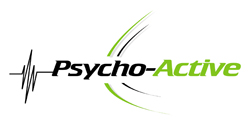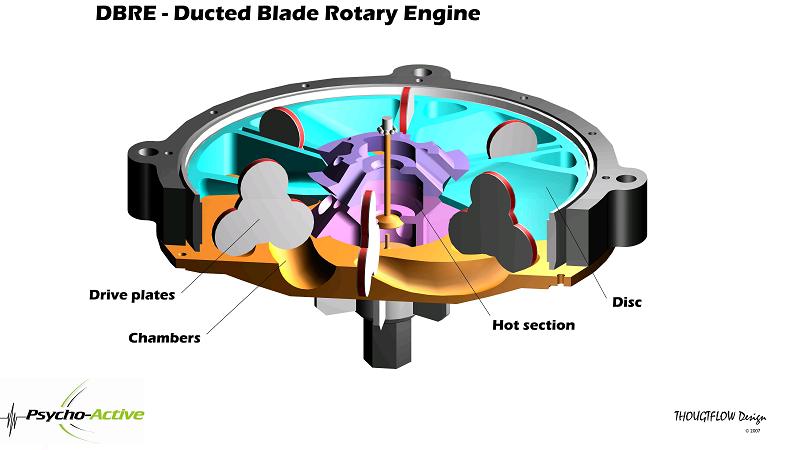 |
X-PRIZE team
PSYCHO-ACTIVE Ducted
Blade Rotary
Engine (DBRE) Contributed
by THOUGHTFLOW Design |
 |

A Turbine for the Masses!
Topography
A rotating disc, sandwiched between
plates having a series
of divot like chambers, carries spinning drive plates with a lobe
engaging each
chamber sequentially. The
sweep of a
lobe through a chamber is analogous to the motion of a piston or
perhaps a
positive displacement turbine blade.
In the illustrated topography, each drive plate lobe accomplishes two cycles of operation simultaneously. Air is drawn in behind one sweeping drive plate while exhaust gases are pushed out in front of it. The following drive plate will enter that chamber 60 degrees later compressing the fresh air while being pushed by the combustion gases of the power stroke.
Fuel Efficiency
1) Thermodynamic- each cycle is a separate
process and can be
optimized for efficiency. The
external
combustion process can be stabilized with a normal fuel/air mix core
[catalytic]
and the power output adjusted with ultra lean bypass air. This provides cooling of
the hot
section, lowers the
combustion
temperature and NOX emissions. The
inter
stage heat energy is usefully recovered in the power stroke. Metering the volume of
combustion gases allowed
to expand in the power stroke effectively lowers the heat wasted in
exhaust. It
is anticipated that a high ‘compression ratio’ can be maintained for
thermodynamic efficiency over all operating parameters.
2) Losses eliminated- some internal losses are inherently reduced by the low part count but more significant is the elimination of pumping loss. Conventional engines are throttled but must still carry enough momentum to complete all four cycles. This forces the engine to work against itself and requires a high speed idle.
In contrast, the DBRE has staggered power strokes meaning there are no dead centers and they overlap the demands of the compression stroke. Idle is unnecessary and pumping losses are gone.
3) Energy conservation- Combustion (and fuel consumption) is restricted to the demand for power. While slowing down, fuel burn is stopped and regenerative braking energy is stored as compression for later use. Captured internally, or with additional external accumulators, it can be released to motor the engine without combustion then fuel can be added as necessary. Self starting.
Wide market potential
The volume displaced
by a Drive plate sweeping through chambers:
Color Code: INTAKE - COMPRESSION - POWER - EXHAUST
Color Code: INTAKE - COMPRESSION - POWER - EXHAUST
Get the Flash Player to see this player.